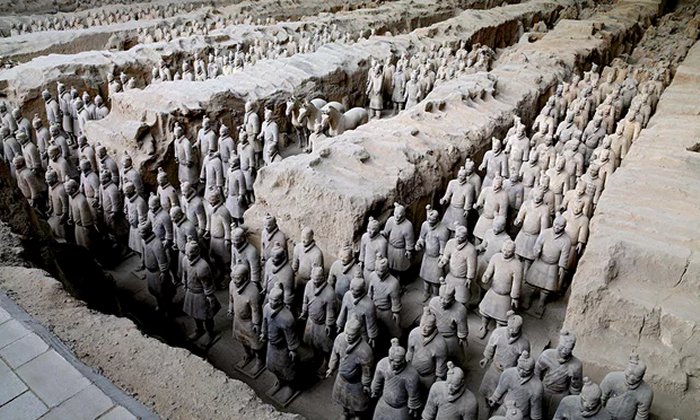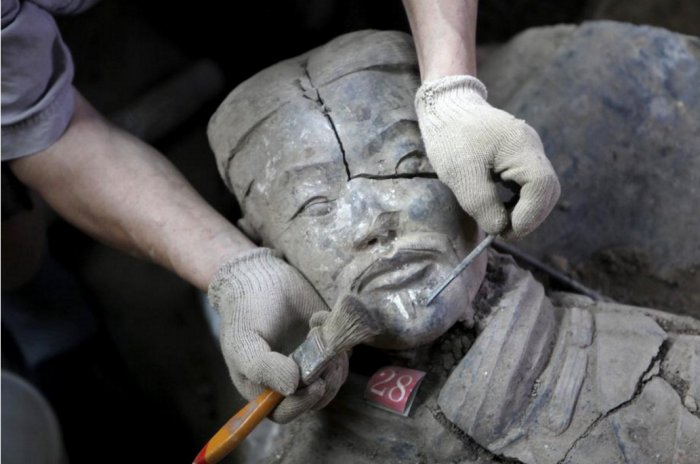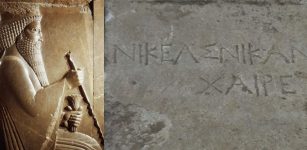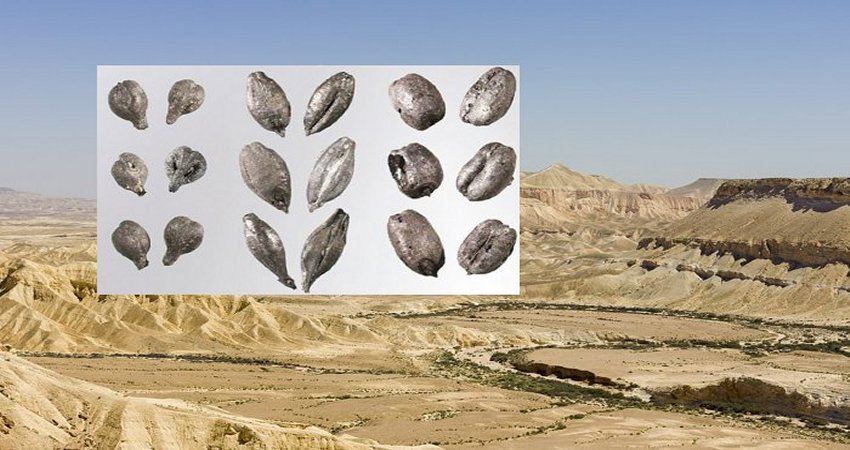Startling DNA Discovery: Ancient Greeks Could Have Built Famous Terracotta Army
MessageToEagle.com – The discovery of the famous Terracotta Army is one of the greatest archaeological finds of all time, but it seems we don’t know the whole story behind this wonderful ancient treasure.
The Terracotta Army was buried with Qin Shi Huang, the first Emperor of China, in the third century BC. It was found on March 29, 1974 by local farmers.
Emperor Qin Shi Huang’s past is still surrounded by a number of unsolved mysteries and controversies. His birth and death remains a great puzzle until this day. Now it seems we must also once again try and solve the mystery of his great Terracotta Army.
Scientists are now seriously consider the possibility this huge number of sculptures found in Huang’s burial were actually built by the ancient Greeks who traveled to China 1,500 years before Marco Polo’s historic trip.

Researchers base their theory on European DNA found at sites in China’s Xinjiang province from the time of the First Emperor in the Third Century BC as well as the sudden appearance of life-sized statues.
The theory – outlined in a documentary, The Greatest Tomb on Earth: Secrets of Ancient China, to be shown on BBC Two on Sunday – is that Shi Huang and Chinese artists may have been influenced by the arrival of Greek statues in central Asia in the century following Alexander the Great, who led an army into India.
Before, third century BC, depictions of humans in China are thought to have been figurines of up to about 20cm.

But 8,000 extraordinarily life-like terracotta figures were found buried close to the massive tomb of China’s First Emperor, Qin Shi Huang, who unified the country in 221BC.
It has now been suggested the Terracotta Army is the work of ancient Greek artists.
See also:
Mysterious History Of Qin Shi Huang – First Emperor Of China
Emperor Kublai Khan: One Of The Most Powerful People In Human History
“I imagine that a Greek sculptor may have been at the site to train the locals, ” Professor Lukas Nickel, chair of Asian art history at Vienna University said.
The theory can seem far-fetched, but it should be taken seriously. It is not the first time scientists have found traces of ancient Greek influence inside the tomb. Scientists found a number of exquisite bronze figurines of birds excavated from the tomb site. These were made with a lost wax technique known in Ancient Greece and Egypt.
There was a breakthrough in sculpture particularly in ancient Athens at about the time when the city became a democracy in the 5th century BC.

Previously, human figures have been stiff and stylized representations, but the figures carved on the Parthenon temple were so life-like it appeared the artists had turned stone into flesh.
Dr Li Xiuzhen, senior archaeologist at the tomb’s museum, agreed that it appeared Ancient Greece had influenced events in China more than 7,000km.
“We now have evidence that close contact existed between the First Emperor’s China and the West before the formal opening of the Silk Road,” the expert said.
“This is far earlier than we formerly thought.
“We now think the Terracotta Army, the acrobats and the bronze sculptures found on site have been inspired by ancient Greek sculptures and art.”
MessageToEagle.com










